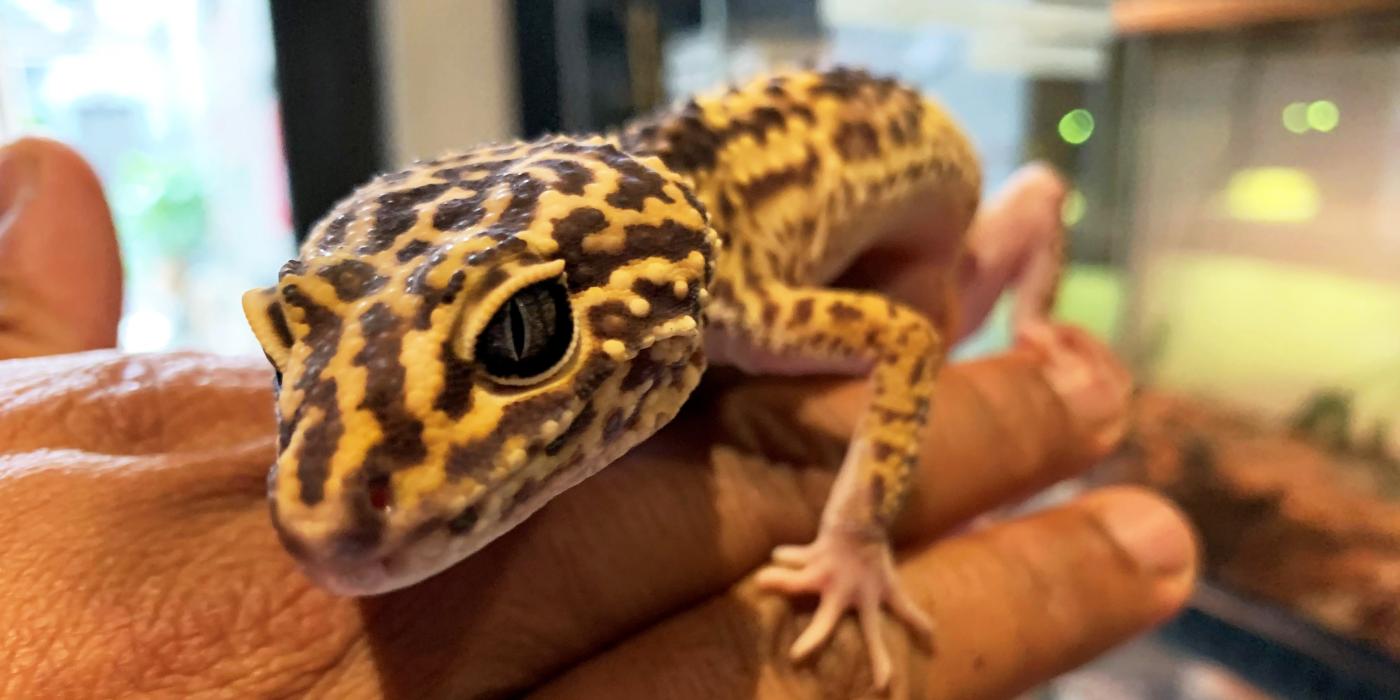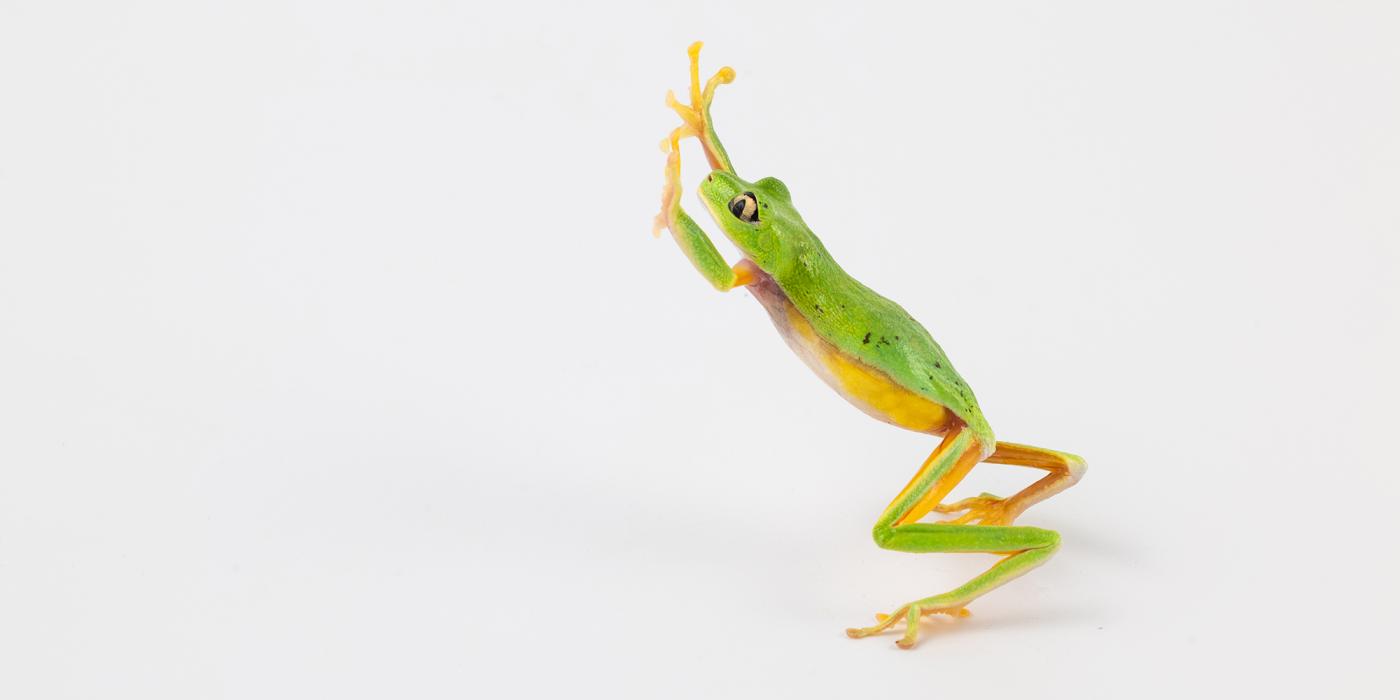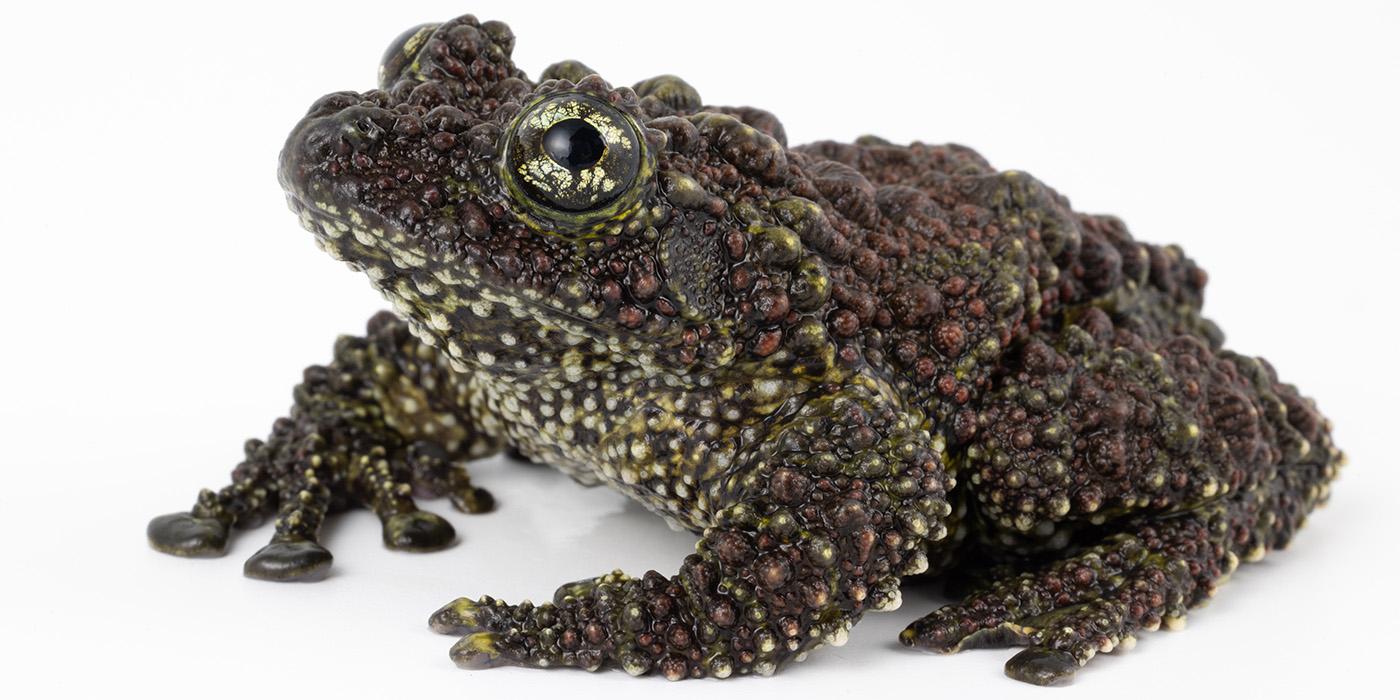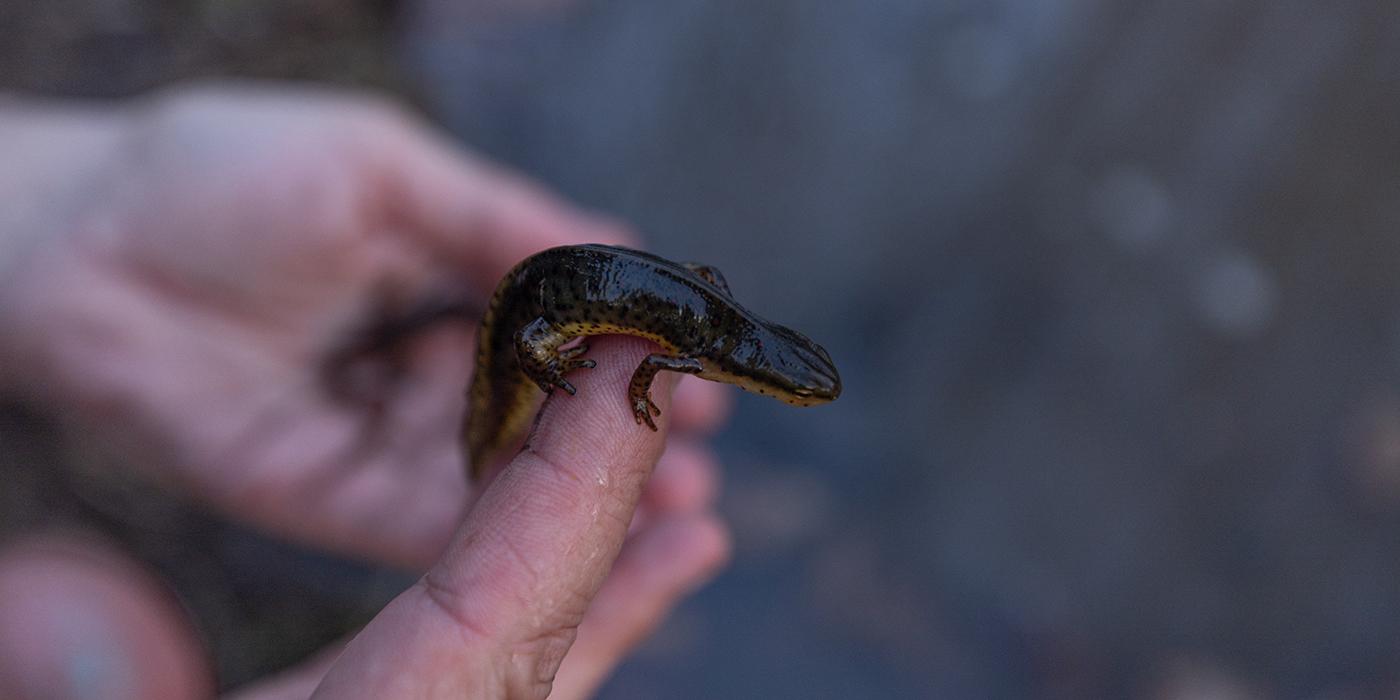New at the Zoo: Iranian Fat-Tailed Gecko
Two mysterious and secretive residents recently arrived at the Reptile Discovery Center: Iranian fat-tailed geckos! Get the scoop on this rad brother-sister duo from animal keeper Sara Hasenstab.
What are your favorite facts about these geckos?
Iranian fat-tailed geckos’ name was inspired by their bulbous tail, which acts as a fat reserve. It can also help them get out of sticky situations if they shed it as a last resort defense against a predator.
This species is also known as the Iranian eyelid gecko, since they belong to a very small and unique subfamily of geckos with eyelids (Eublepharinae). Other geckos do not have eyelids, so they can’t blink!
Do these geckos have sticky feet?
No. None of the species in this genus have the “sticky” lamellae on their toes. However, these geckos do have small claws that help them climb over rocks and dig into the ground.
When are they most active?
Iranian fat-tailed geckos are nocturnal, so they spend the majority of the day sleeping. When they aren’t resting, they are usually exploring their exhibit, hunting for prey—look for those lizard tongue flicks!—or digging in the dirt and sand to find the perfect napping spot.
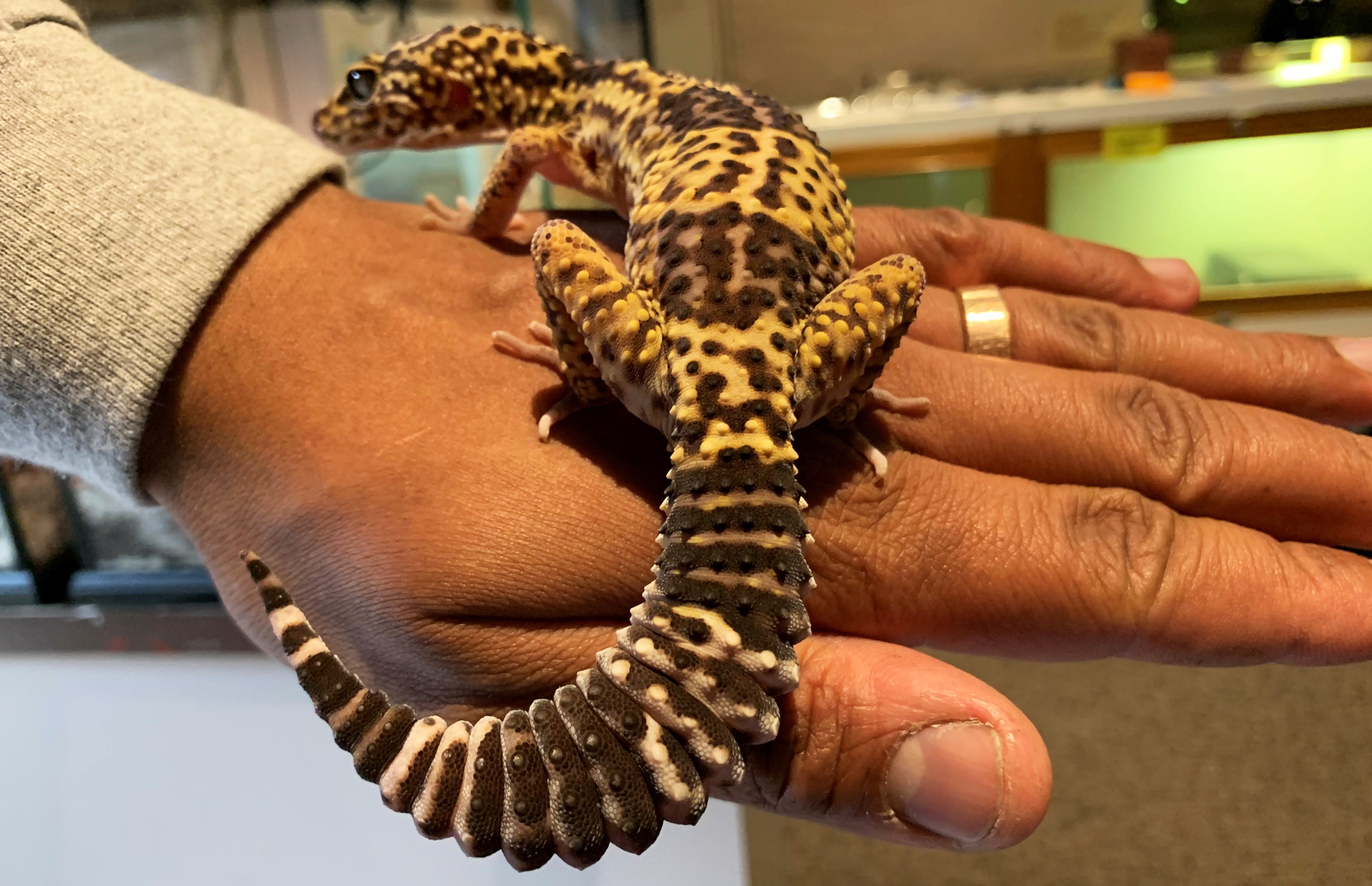
What do they eat?
In the wild, this species eats a wide range of invertebrates, including spiders and scorpions. They will also occasionally eat eggs and smaller reptiles. Here at the Zoo, they receive a variety of live prey to hunt, including crickets, mealworms, roaches and earthworms.
Got any tips for spotting them?
Sometimes, they will be up and about first thing in the morning, especially if we have fed them or cleaned their enclosure. One of their favorite spots is a fake rock with multiple “doors” in the front-left corner of the habitat. Usually, they choose to sleep in there, and it is easy to see their beautiful spotted pattern through the opening.
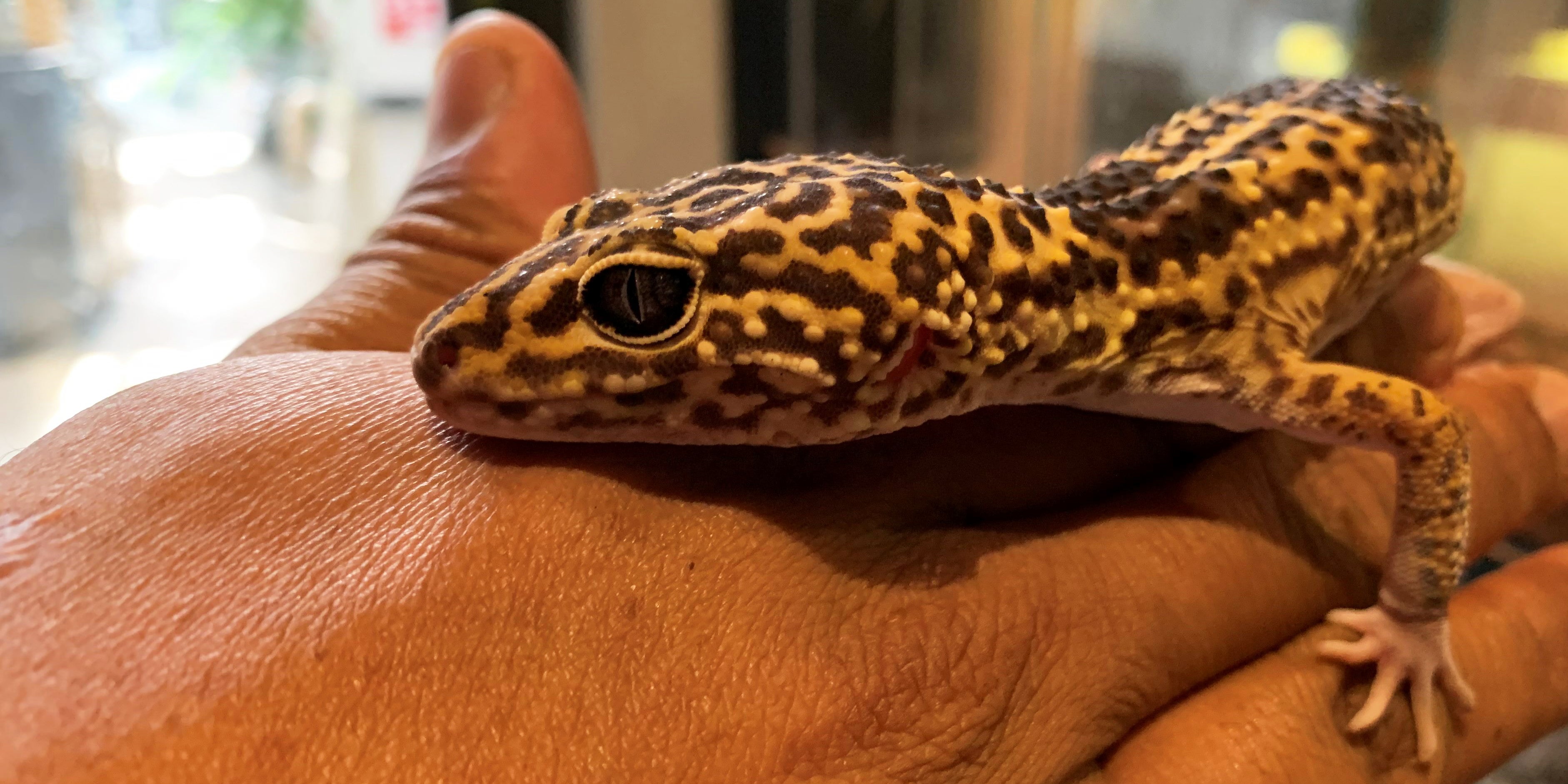
I want to help Iranian fat-tailed geckos! What can I do?
When considering a reptile or amphibian for a pet, make sure you purchase from a well-respected breeder. Unfortunately, many animals are illegally smuggled from the wild for the pet trade. Not only does this hurt wild populations, but also can spread pathogens around the world.
Be conscious about other purchases, too. A lot of what we throw away in the trash or recycle bin ends up polluting our wild spaces, especially when we consider that only 14 percent of plastic gets recycled. We can all do our part to reduce plastic consumption by replacing our disposable items with reusable ones—like using mesh produce bags at the grocery store, or bringing a travel mug to your favorite coffee shop. Every little bit helps protect the wild spaces that these and other animals call home!
This story appears in the March 2020 issue of National Zoo News. Want an up close experience with some really cool reptiles and amphibians? Don’t miss keeper talks and demonstrations at 11 a.m. and 3 p.m. daily at the Reptile Discovery Center.Related Species:
